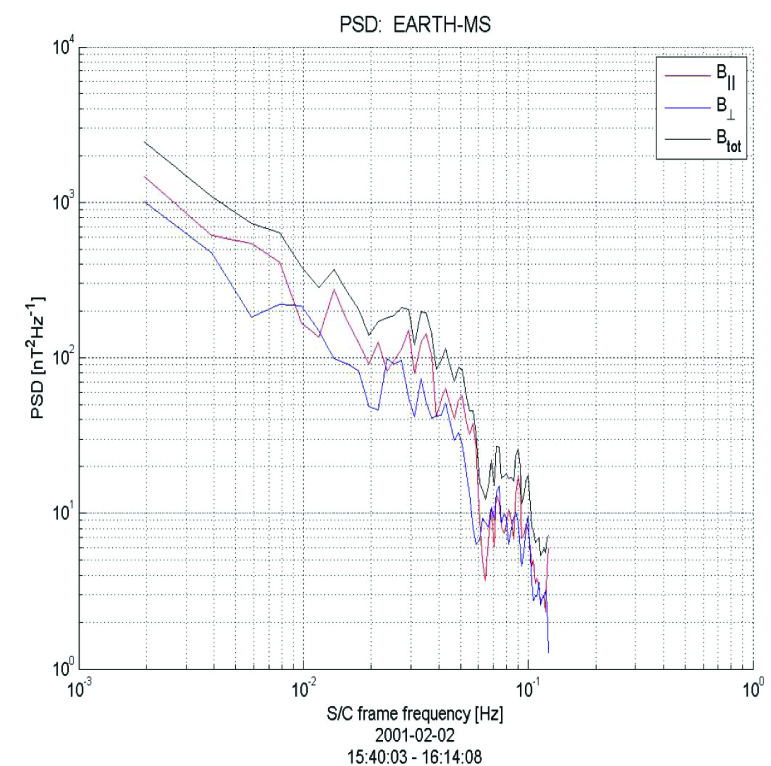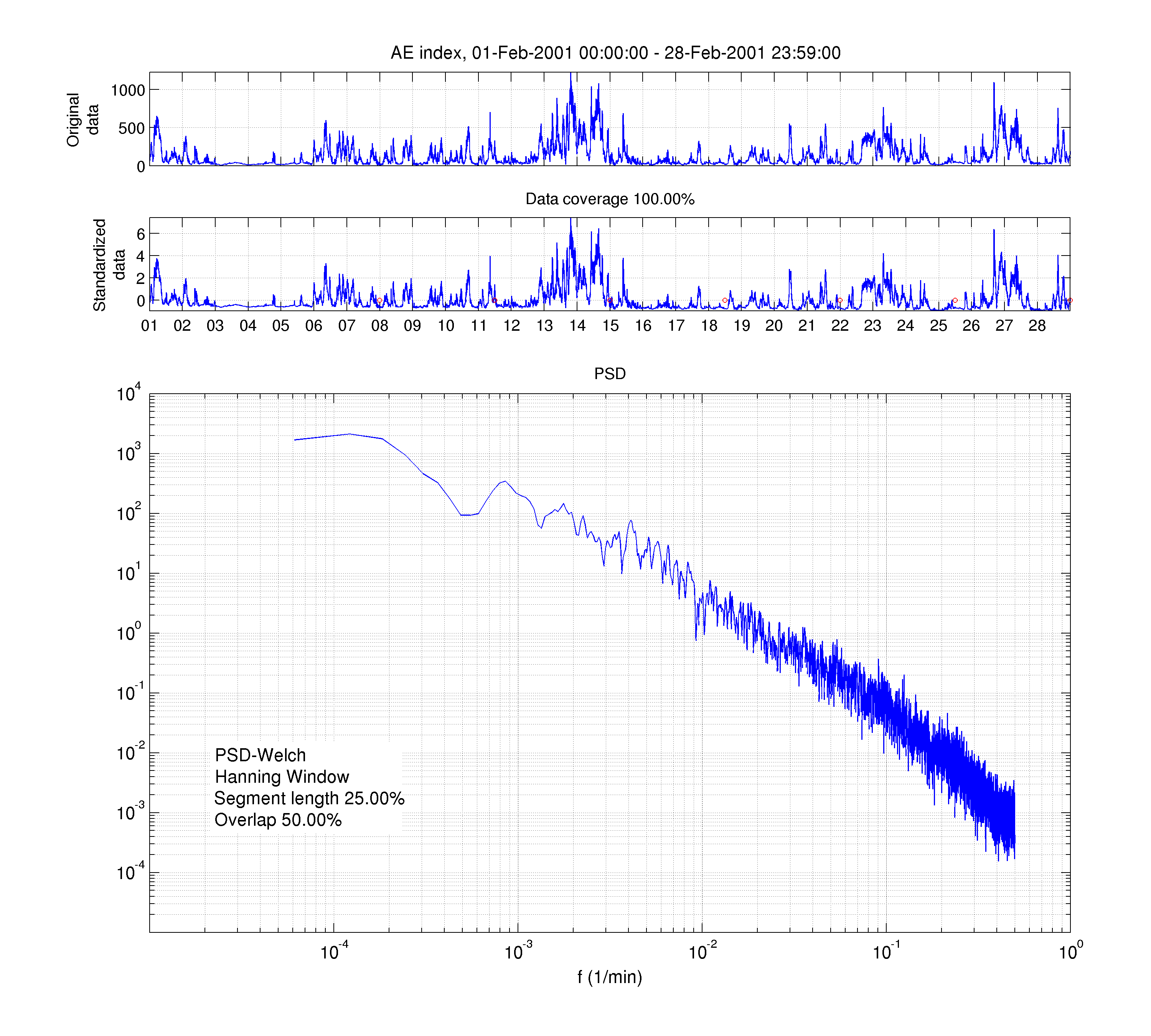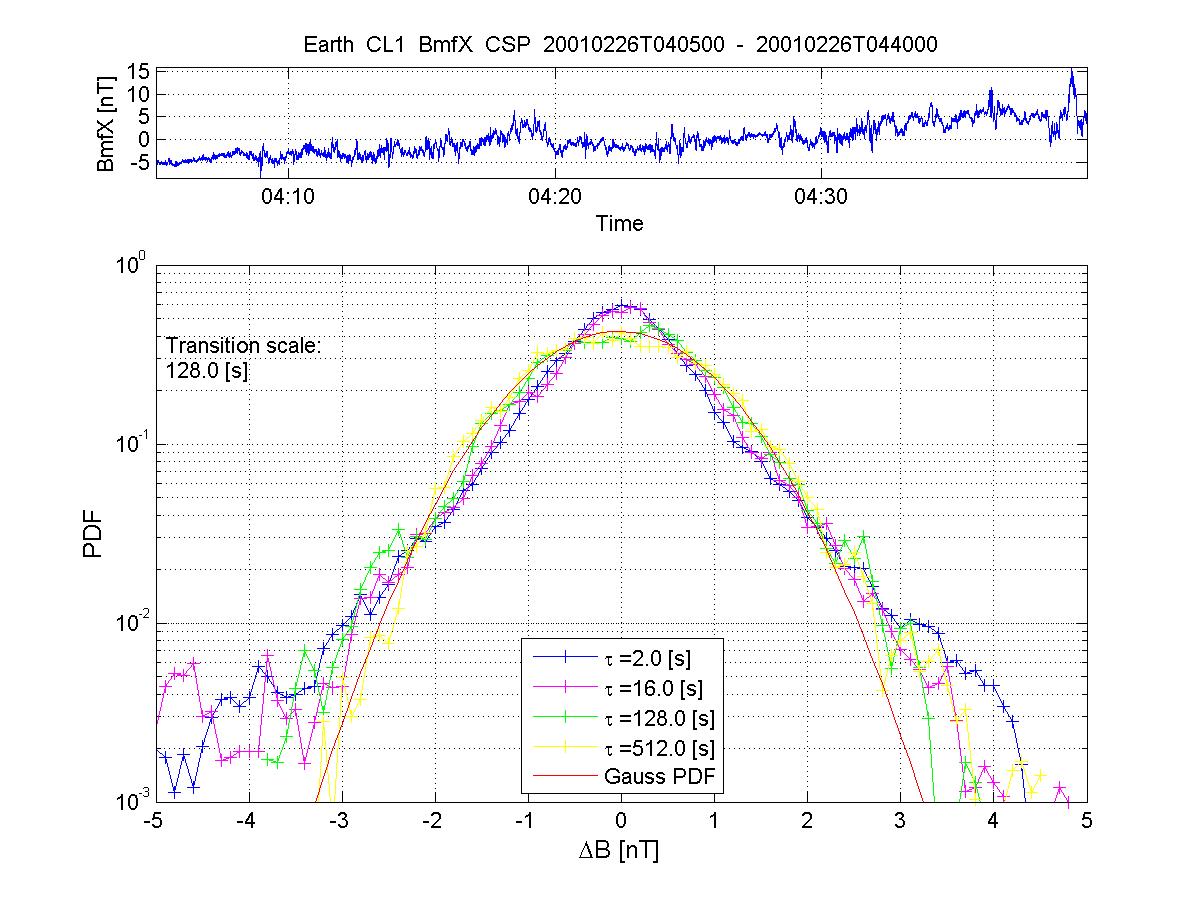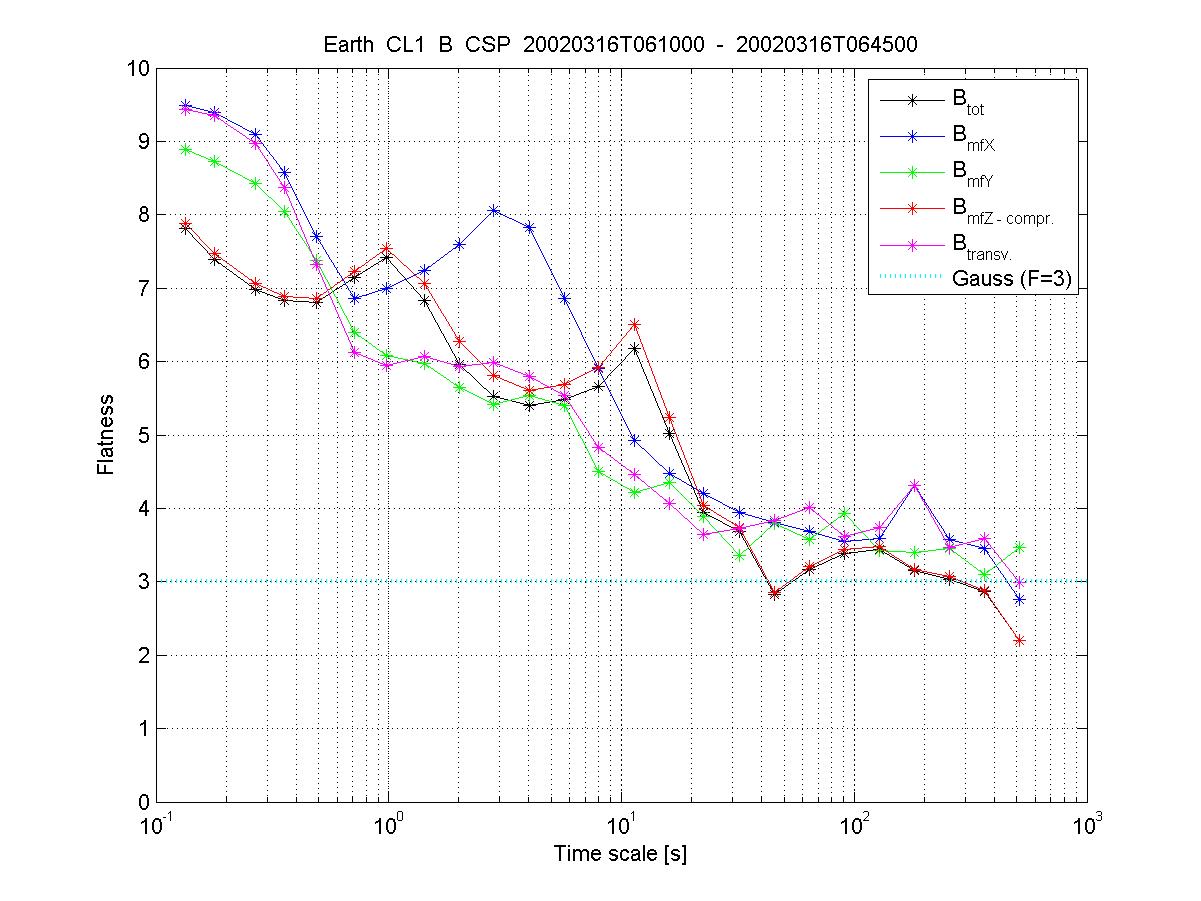This database provides results of the analysis of magnetosheath data (from Cluster between 2000 and 2001) and geomagnetic field data (for geomagnetic indices AE, AL, Am, ASYD, AU, Dcm, SYMD, SYMH, and individual magnetic observatories from Finland - Sodankylä, Nurmijärvi, Belsk). It includes three catalogues, one for each type of data analysis, as shown below:
- D2MAXMSPH_2001_2002_PSD - A catalogue of spectral analysis of magnetosheath data from Cluster and geomagnetic data between 2001 and 2002; it includes 813 PSD spectra of which 381 spectra from Cluster data and 432 spectra for geomagnetic indices and ground-based records.
- D2MAXMSPH_2001_2002_PDF - A catalogue of Probability distribution functions (PDFs) computed for magnetosheath data from Cluster and geomagnetic indices and observations between 2001 and 2002; it includes a total number of 2273 PDFs of which 1985 are computed for Cluster data and 276 for geomagnetic indices and ground-based observations.
- D2MAXMSPH_2001_2002_Multifractals - A catalogue of multifractal spectra (computed with Partition Function and Rank Ordered methods) for magnetosheath data from Cluster and geomagnetic indices and observations between 2001 and 2002. The catalogue includes 5585 multifractal spectra of which 5345 spectra are computed for Cluster data (856 spectra are computed with partition function and 4479 with rank order approach, respectively). 240 multifractal spectra are computed for geomagnetic indices and ground-based observations.
1. D2MAXMSPH_2001_2002_PSD. The name of files included in this archive are self explanatory: it indicates the spacecraft and the date of observation. For each PSD analysis we provide a graphical file that shows the power spectral density of the parallel, and perpendicular component as well as the total intensity of the magnetic field.
|
Example of a PSD spectrum computed for the parallel, perpendicular and total magnetic field from Cluster observations in the Earth's magnetosheath. This type of result is available as a graphical and binary file from the catalogue D2MAXMSPH_2001_2002_PSD. |
Example of a PSD analysis of the AE index fluctuations recorded between 1st and 31st of January 2001. First two panels show the raw and the normalized data, respectively. The last panel shows the PSD of AE. |
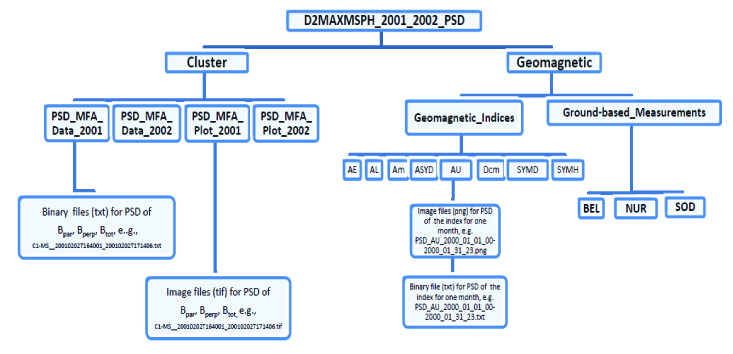 The structure of the catalogue D2MAXMSPH_2001_2002_PSD that includes PSD analysis (as graphical and binary files) for magnetosheath data (from Cluster) and geomagnetic indices and data.
The structure of the catalogue D2MAXMSPH_2001_2002_PSD that includes PSD analysis (as graphical and binary files) for magnetosheath data (from Cluster) and geomagnetic indices and data.
2. D2MAXMSPH_2001_2002_PDF. This archive provides the results of the probability distribution functions analysis. It includes graphical and binary files illustrating the probability distribution functions and their fourth order moment (kurtosis or flatness) for the three components of the magnetic field in GSM frame measured by Cluster in the magnetosheath and also for eight different geomagnetic indices as well as magnetic field data from three auroral magnetic observatories from Finland.
|
|
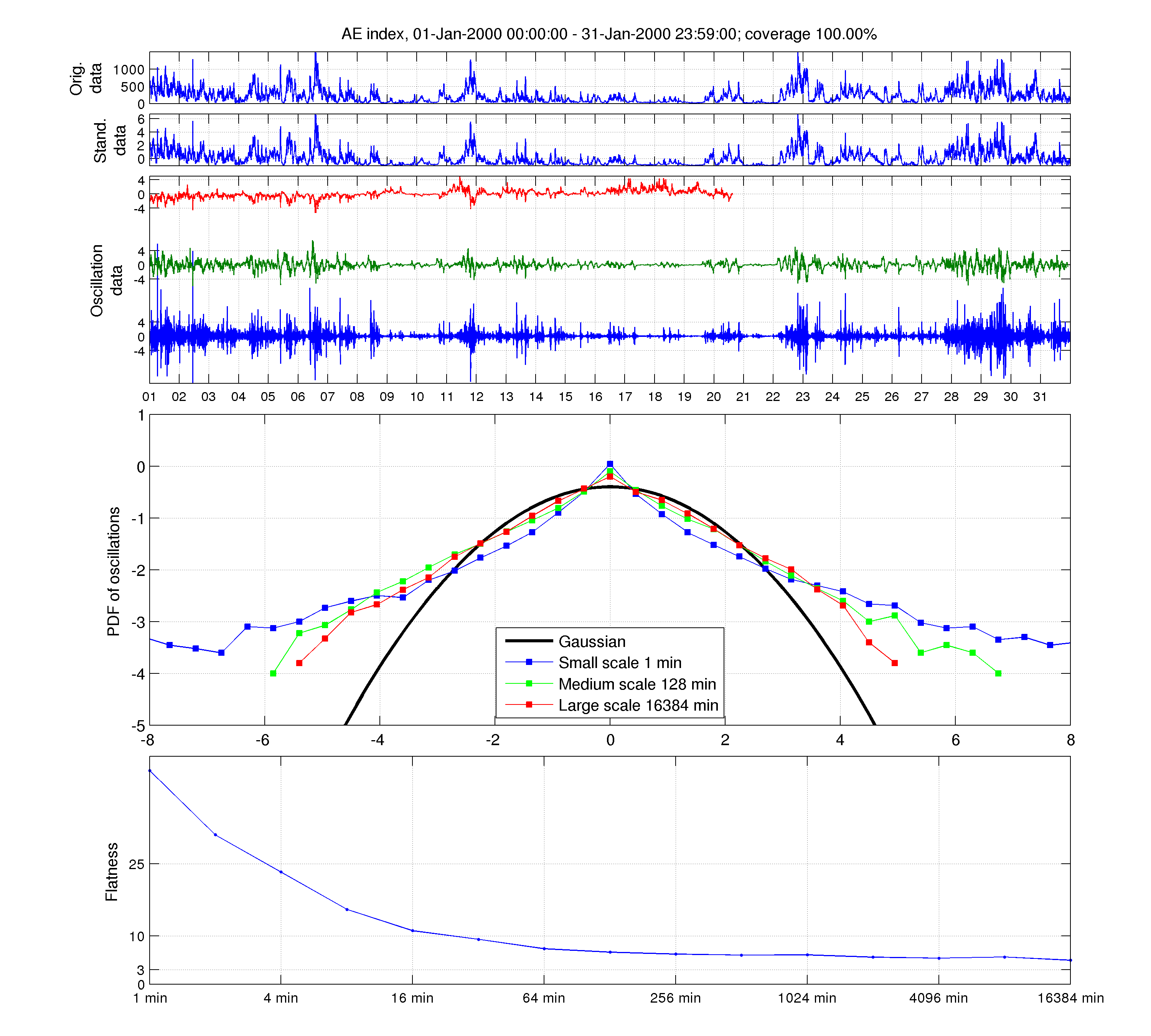 Example of a Probabiity Distribution Function analysis of the AE index fluctuaitons recorded in January 2001. The first two panels show the raw and normalized (by subtracting the average and dividing to the standard deviation) time series. The second panel shows the distribution of differences computed for the three considered scales. The fourth panel shows the PDFs corresponding to the three scales. The last panel shows the flatness as a function of scale. This type of result is available as a graphical and binary file from the catalogue D2MAXMSPH_2001_2002_PDF. Example of a Probabiity Distribution Function analysis of the AE index fluctuaitons recorded in January 2001. The first two panels show the raw and normalized (by subtracting the average and dividing to the standard deviation) time series. The second panel shows the distribution of differences computed for the three considered scales. The fourth panel shows the PDFs corresponding to the three scales. The last panel shows the flatness as a function of scale. This type of result is available as a graphical and binary file from the catalogue D2MAXMSPH_2001_2002_PDF. |
The structure of the archive D1MAXSW_1999_2001_PDF is similar to that of D1MAXSW_1999_2001_PSD depicted in the diagram above. Note however that data from 2003 were additionally included in D1MAXSW_1999_2001_PDF. Graphical and binary files are availbale for download.
3. D2MAXMSPH_1999_2001_Multifractals. The resuly of the multifractal analysis are organized in an archive whose structure is similar to the one illustrated in the diagram inserted above (for D1MAXSW_1999_2001_PSD). We provide two types of multifractal spectra:(1) the partition function multifractal spectra (for a description see, e.g., Wawrzaszek et al., ApJL, 2015) and the Rank Ordered Multifractal Analysis (ROMA, for a description see; e.g. Chang et al., 2011), as illustrated below.
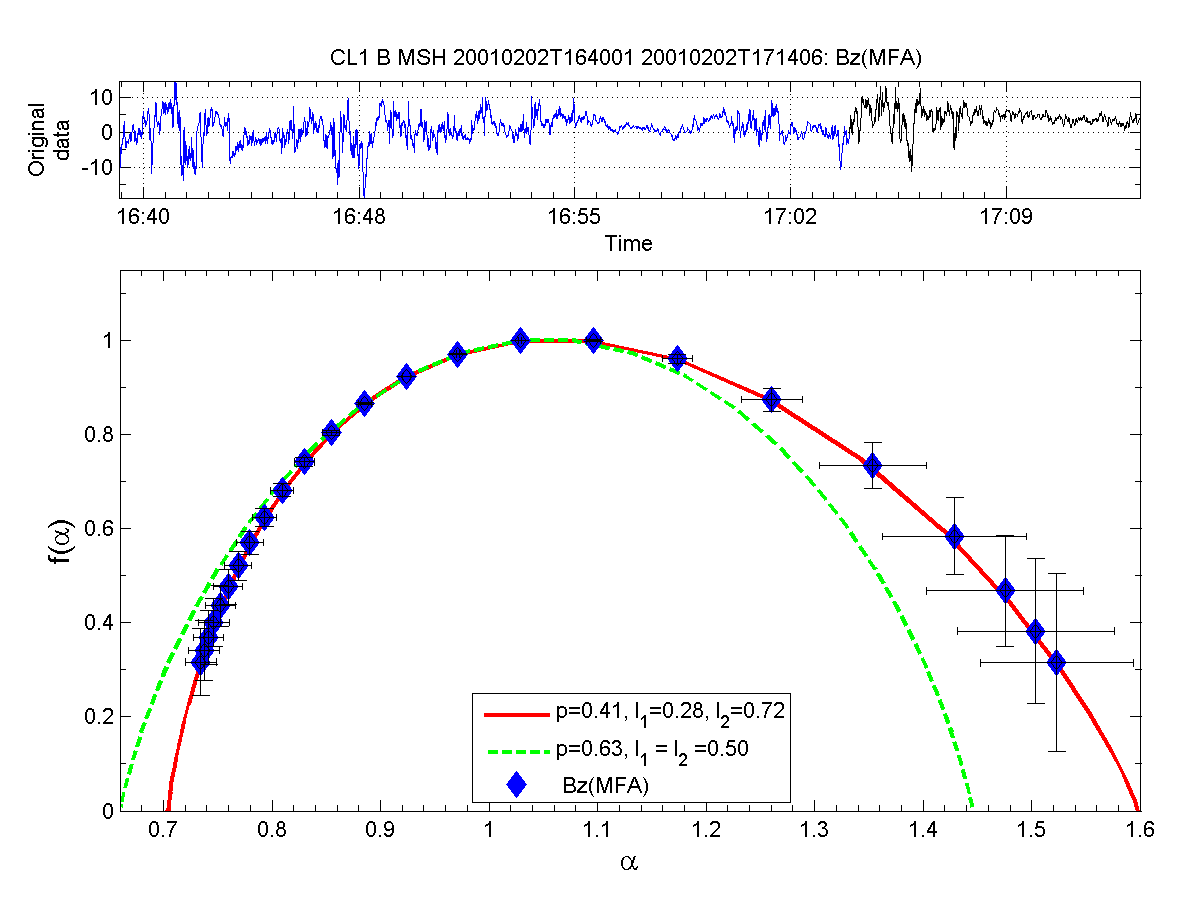 An example of Partition Function Multifractal spectrum of magnetic field fluctuations observed by Cluster in the Earth's magnetosheath. The upper panel shows the analyzed time series (Bx in this case, the region where the multifractal measure converged is shown in blue). The lower panel shows the multifractal spectrum f(a). In green and blue are traced the multifractal spectra resulting from a p-model and a modified two-scale Cantor set (Szczepaniak. and Macek, 2008), respectively. An example of Partition Function Multifractal spectrum of magnetic field fluctuations observed by Cluster in the Earth's magnetosheath. The upper panel shows the analyzed time series (Bx in this case, the region where the multifractal measure converged is shown in blue). The lower panel shows the multifractal spectrum f(a). In green and blue are traced the multifractal spectra resulting from a p-model and a modified two-scale Cantor set (Szczepaniak. and Macek, 2008), respectively. |
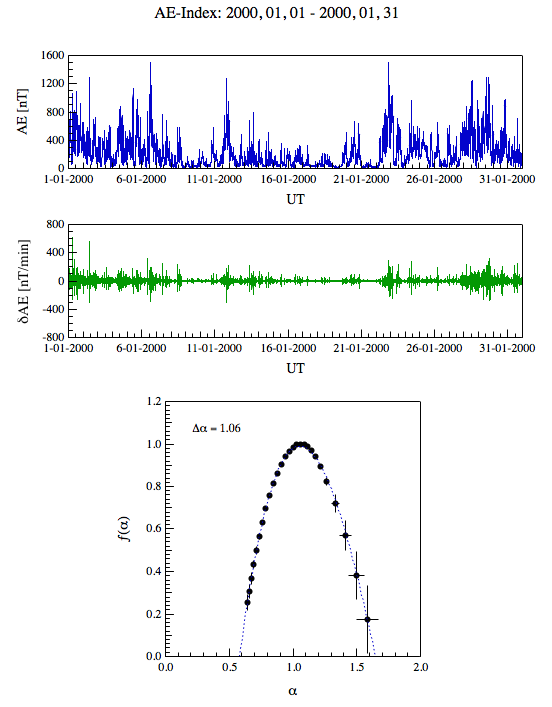 An example of Partition Function multifractal analysis performed on the monthly fluctuations of the geomagnetic indices (AE in this case). The upper panel show the AE values between January 1st and January 31st 2000. Second panel show the variation of the multifractal measure. The third panel shows the multifractal spectrum f(a). An example of Partition Function multifractal analysis performed on the monthly fluctuations of the geomagnetic indices (AE in this case). The upper panel show the AE values between January 1st and January 31st 2000. Second panel show the variation of the multifractal measure. The third panel shows the multifractal spectrum f(a). |
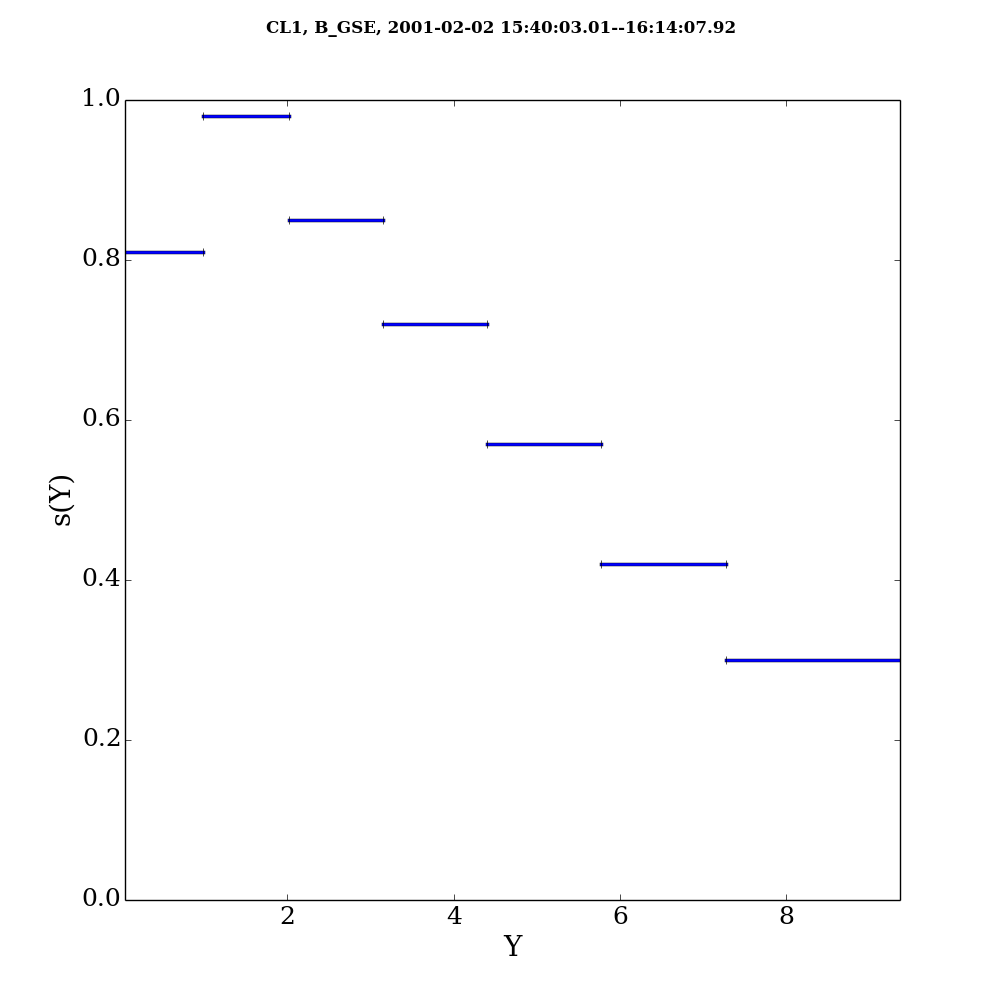 An example of Rank Ordered Multifractal analysis (Chang et al., 2011) aplied on magnetic field fluctuations measured by Cluster in the magnetosheath. An example of Rank Ordered Multifractal analysis (Chang et al., 2011) aplied on magnetic field fluctuations measured by Cluster in the magnetosheath. |
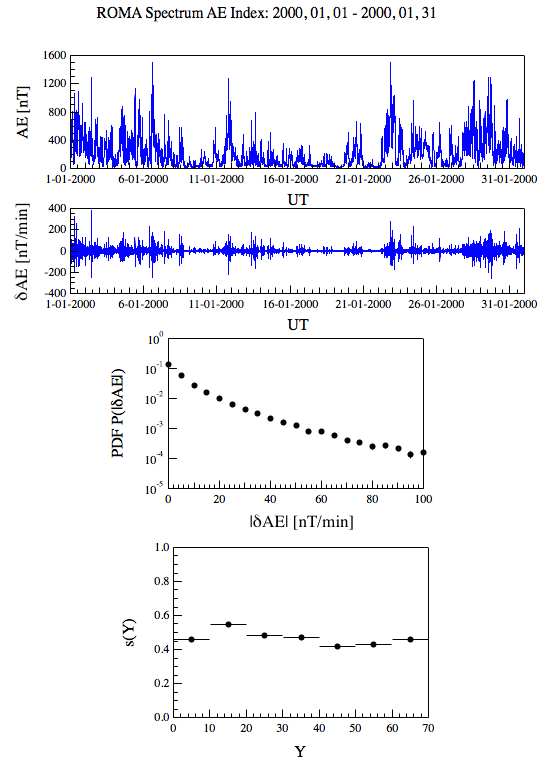 An example of Rank Ordered Multifractal Analysis (ROMA) applied on the fluctuations of geomagnetic indices (AE in this example). The first panel shows the AE index for Janaury 2001, the second panel shows the fluctuations of the index, the third panel shows the PDF of the fluctuations and the fourth panel shows the ROMA spectrum. An example of Rank Ordered Multifractal Analysis (ROMA) applied on the fluctuations of geomagnetic indices (AE in this example). The first panel shows the AE index for Janaury 2001, the second panel shows the fluctuations of the index, the third panel shows the PDF of the fluctuations and the fourth panel shows the ROMA spectrum. |










